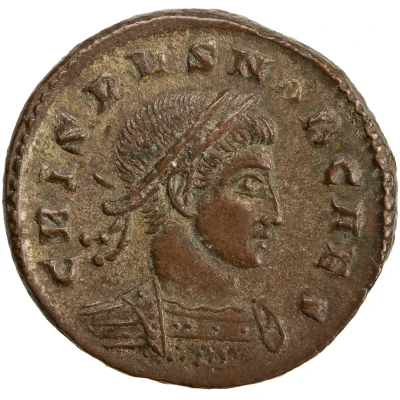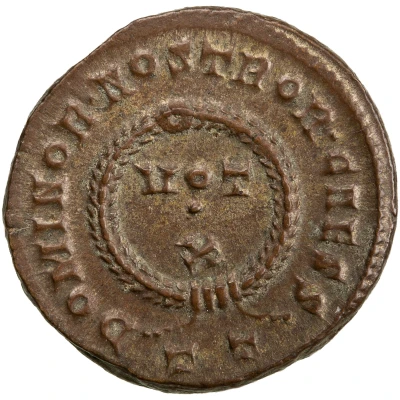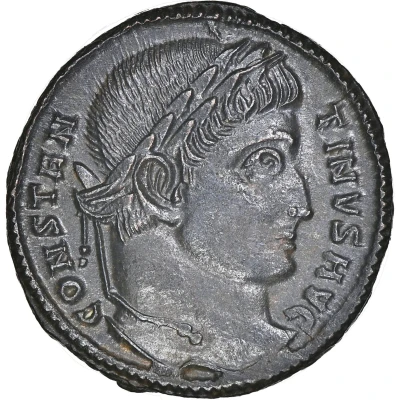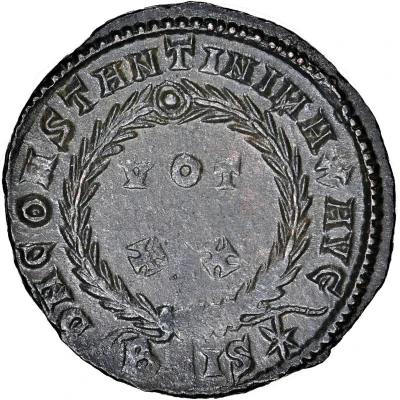


© American Numismatic Society (ANS)
Nummus - Crispus DOMINOR • NOSTROR • CAESS; Ticinum
| Bronze | 3.06 g | 19 mm |
| Issuer | Rome › Roman Empire (27 BC - 395 AD) |
|---|---|
| Emperor | Constantine I (Flavius Valerius Constantinus) (306-337) |
| Type | Standard circulation coin |
| Years | 320-321 |
| Value | Nummus (1⁄7200) |
| Currency | Solidus, Reform of Constantine (AD 310/324 – 395) |
| Composition | Bronze |
| Weight | 3.06 g |
| Diameter | 19 mm |
| Shape | Round (irregular) |
| Technique | Hammered |
| Orientation | Variable alignment ↺ |
| Demonetized | Yes |
| Updated | 2024-10-05 |
| Numista | N#402063 |
|---|---|
| Rarity index | 95% |
Reverse
Laurel wreath inscribed with vows, Officina and mintmark in exergue.
Script: Latin
Lettering:
DOMINOR • NOSTROR • CAESS
VOT X
Unabridged legend: Dominorum Nostrorum Caesarum / Votis decennalibus
Translation: For our lords the Caesars / Vows for the tenth anniversary of reign
Interesting fact
One interesting fact about the Nummus - Crispus coin is that it features the first Christian symbol, the Chi-Rho, on its reverse side. The Chi-Rho is a combination of the Greek letters Chi (Χ) and Rho (Ρ), which are the first letters of the Greek word "Christos" (Χριστός), meaning "Christ." This symbol was used by early Christians to secretly identify themselves and mark their belongings, as Christianity was still a persecuted religion at the time. The inclusion of the Chi-Rho on the coin suggests that the Roman Empire was beginning to recognize and tolerate Christianity, which would eventually become the dominant religion of the empire.



